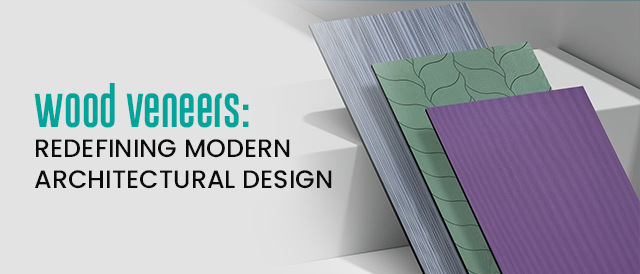Introduction
Wood veneers have become a go-to solution for
architects and designers who seek to infuse warmth, sophistication, and natural
elements into their projects. Derived from real wood, veneers are thin
layers that can be applied to various surfaces, creating stunning visual
effects. In this Blog, Natural Veneers will explore the world of wood
veneers, their benefits, and how they are reshaping contemporary architectural
trends.
The Beauty of Wood Veneers
One of the primary reasons wood veneers have gained
popularity is their ability to showcase the innate beauty of wood. Each veneer
displays distinct grain patterns, color variations, and textures, ensuring a
unique and visually appealing result.
Versatility and Adaptability
We offer unparalleled versatility when it comes to
incorporating them into modern architectural designs. Unlike solid wood,
veneers can be applied to both flat and curved surfaces, making them ideal for
creating seamless transitions and custom designs.
Sustainability and Eco-Friendliness
In an era where sustainability is a top priority, wood
veneers stand out as an eco-friendly choice for architectural projects. By
utilizing thin slices of wood, veneers make the most out of valuable timber
resources. This practice allows for more efficient use of wood, reducing waste
and environmental impact.
Advantages of Wood Veneers
Natural Veneers offer numerous advantages that contribute to
their popularity in modern architectural design:
Cost-Effectiveness: Compared to solid wood, veneers
are a more affordable option while still providing the desired aesthetic
appeal.
Consistency: Wood veneers exhibit consistent color
and grain patterns, eliminating the natural variations found in solid wood.
Stability: Veneers are less prone to warping or
cracking, thanks to their thin and flexible nature.
Durability: Properly installed and maintained, wood
veneers can withstand the test of time, maintaining their beauty for years to
come.
Repairability: In the event of damage, wood veneers
can be easily repaired or replaced, minimizing costs and efforts compared to
solid wood restoration.
Applications in Modern Architecture
Natural Wood veneers find applications in various
architectural projects, both residential and commercial. Some of the most
common uses include:
1. Interior Design
Wood veneers add a touch of luxury and warmth to interior
spaces. They can be applied to walls, ceilings, cabinetry, and furniture,
transforming bland areas into inviting and visually striking environments.
Whether it's a residential living room or a hotel lobby, wood veneers create a
sense of elegance and craftsmanship.
2. Furniture Design
Wood veneers are widely used in furniture manufacturing,
offering endless design possibilities. From tables and chairs to cabinets and
headboards, veneers can be used to create stunning focal points and enhance the
overall aesthetic appeal of furniture pieces.
Conclusion
Wood veneers have undoubtedly revolutionized modern
architectural design, allowing architects and designers to redefine spaces with
natural elegance. Their beauty, versatility, sustainability, and
cost-effectiveness make them a go-to choice for various applications. From
interior design to furniture and exterior cladding, wood veneers continue to
shape the aesthetics of contemporary architecture, adding warmth, character,
and a touch of nature to our built environment.
 Reviewed by Natural Veneers
on
11:59 PM
Rating:
Reviewed by Natural Veneers
on
11:59 PM
Rating:






No comments: